CES Unveiled: Tech for a Better Society?
Article By : Nitin Dahad, Brian Santo, David Benjamin and Junko Yoshida
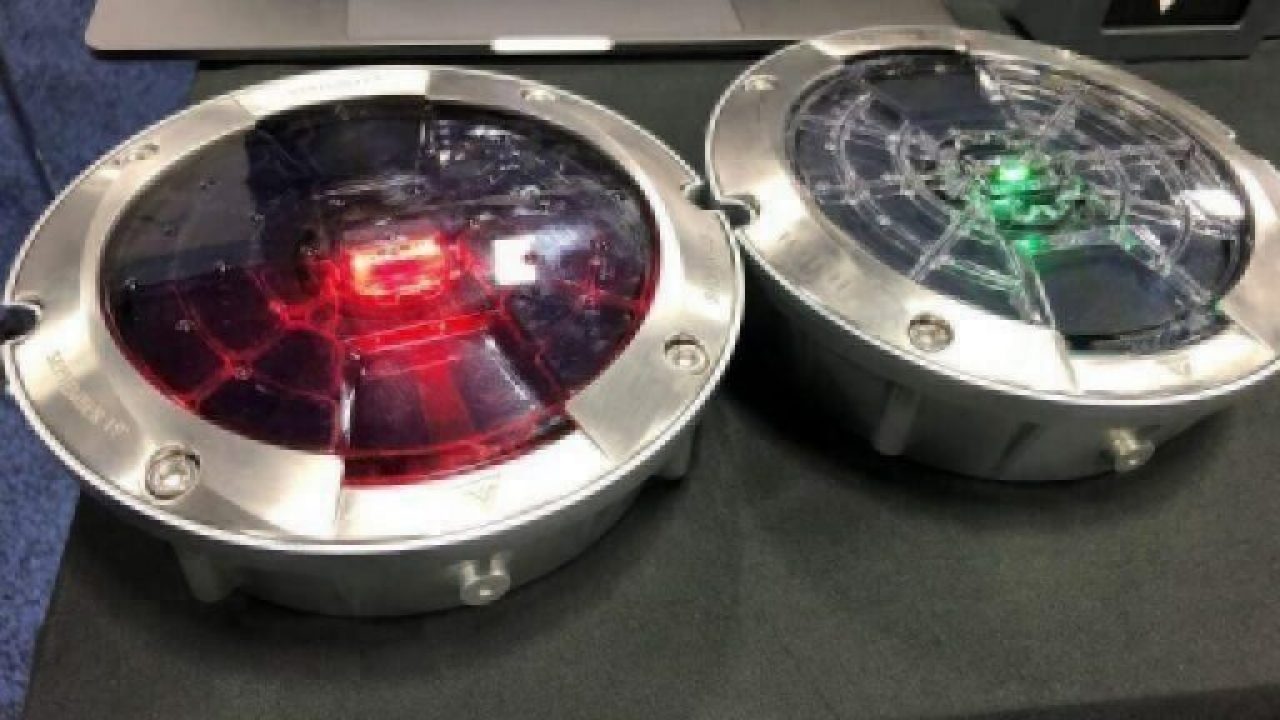
With AI and “machine-learning,” many devices claim to be no just smart, but “intelligent.” We’ll see.
LAS VEGAS – CES Unveiled is a tech fest where startups and established companies pitch and showcase their brightest new ideas and shiniest products, with a strange emphasis on self-improvement.
You name it, Unveiled has everything from ultra-stable drones, “bidirectional” EV chargers to smart road systems that let every car know road conditions and a wrist-band that tells you which foods suit your unique DNA.
The products and prototypes unveiled are an eclectic mix. They often surprise us by offering solutions for problems we didn’t know we had.
Technology and product suppliers exhibiting at the CES Unveiled come from all over the world. The beauty of it all is that this isn’t Silicon Valley-centric.
At CES Unveiled, the La French Tech crowd is alive and well. Traditionally risk-averse Japan is also sending startups. Companies from Israel have a strong presence. We also spotted some entrepreneurs from India.
As expected, many new appliances and gadgets shown here are riding the wave of Artificial Intelligence. Armed with so-called “machine-learning” capabilities and AI in the cloud, many devices claim they’re no longer just smart, but “intelligent.” We’ll see about that.
But what never ceases to amaze at CES Unveiled is the ever-intensifying navel-gazing trend among new apps and products designed by young-generation startup founders.
Tech for a better society? Forget about it. So many of these new technologies now at our fingertips (requiring fingerprint ID and a DNA profile) are focused on plumbing the inner self, correcting our oral hygiene, refining our diets, grooming our skin and enhancing the emotional well-being of our dogs and cats.
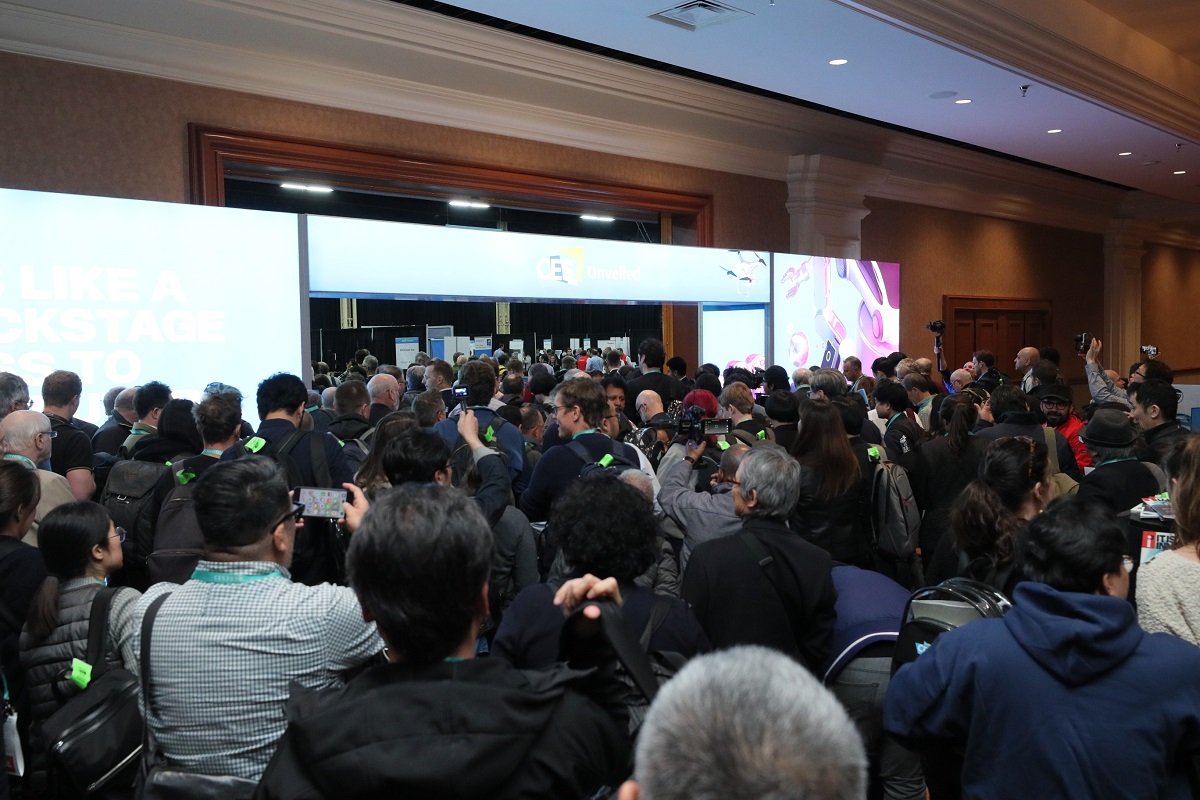
More than a thousand media, industry analysts and “social media influencers” wait for the curtain to rise at the CES Unveiled.
4D Gravity Comes to Drones
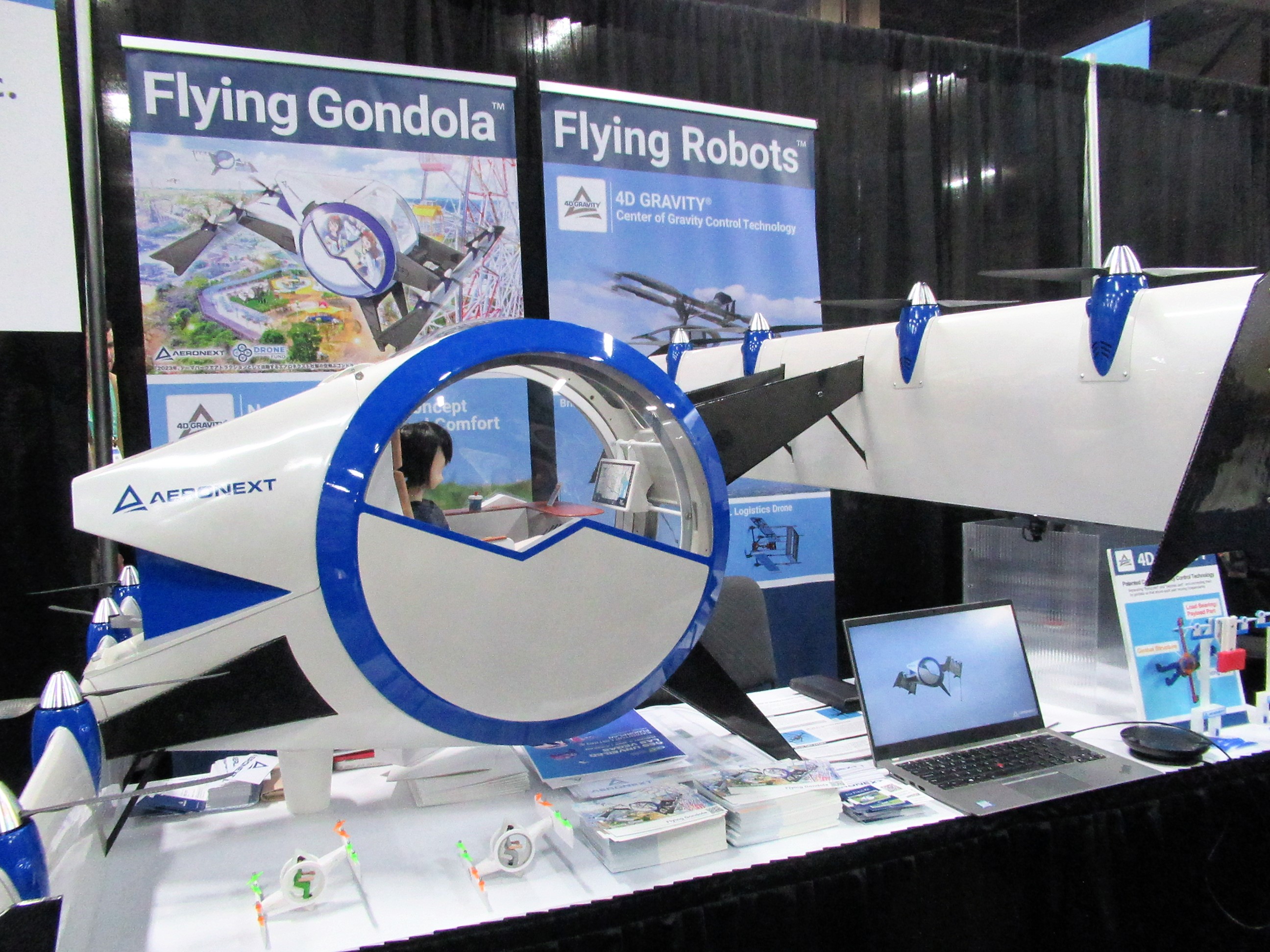
Many drones are originally designed for taking pictures from the air. But what if drones are deployed to actually do stuff – to paint, hammer nails or fix things – from the air?
To carry out tasks for industrial applications, drones must be able to control altitude, a dramatic improvement in stability.
Aeronext, a Tokyo-based non-drone startup, is pitching a new hardware technology called “4D Gravity” for licensing to drone designers.
“Traditionally, drone vendors have depended on software to stabilize drones. But that’s not enough to achieve absolute stability necessary for new industrial applications,” said Natsuko Ito, executive office and global CMO of Aeronext. Trumpeting the tag line “from Flying Camera to Flying Robot,” the Japanese startup claims it has developed a hardware structure to achieve more precise altitude control. 4D Gravity not only improves drone stability but also prolongs battery life.
Has anyone licensed 4D Gravity yet? “Not yet. But we have entered into a memorandum of understanding (MoU) with five drone makers,” including three Japanese drone companies and two Shenzhen-based leading drone makers, MMC and SMD.
DNA-Based Shopping
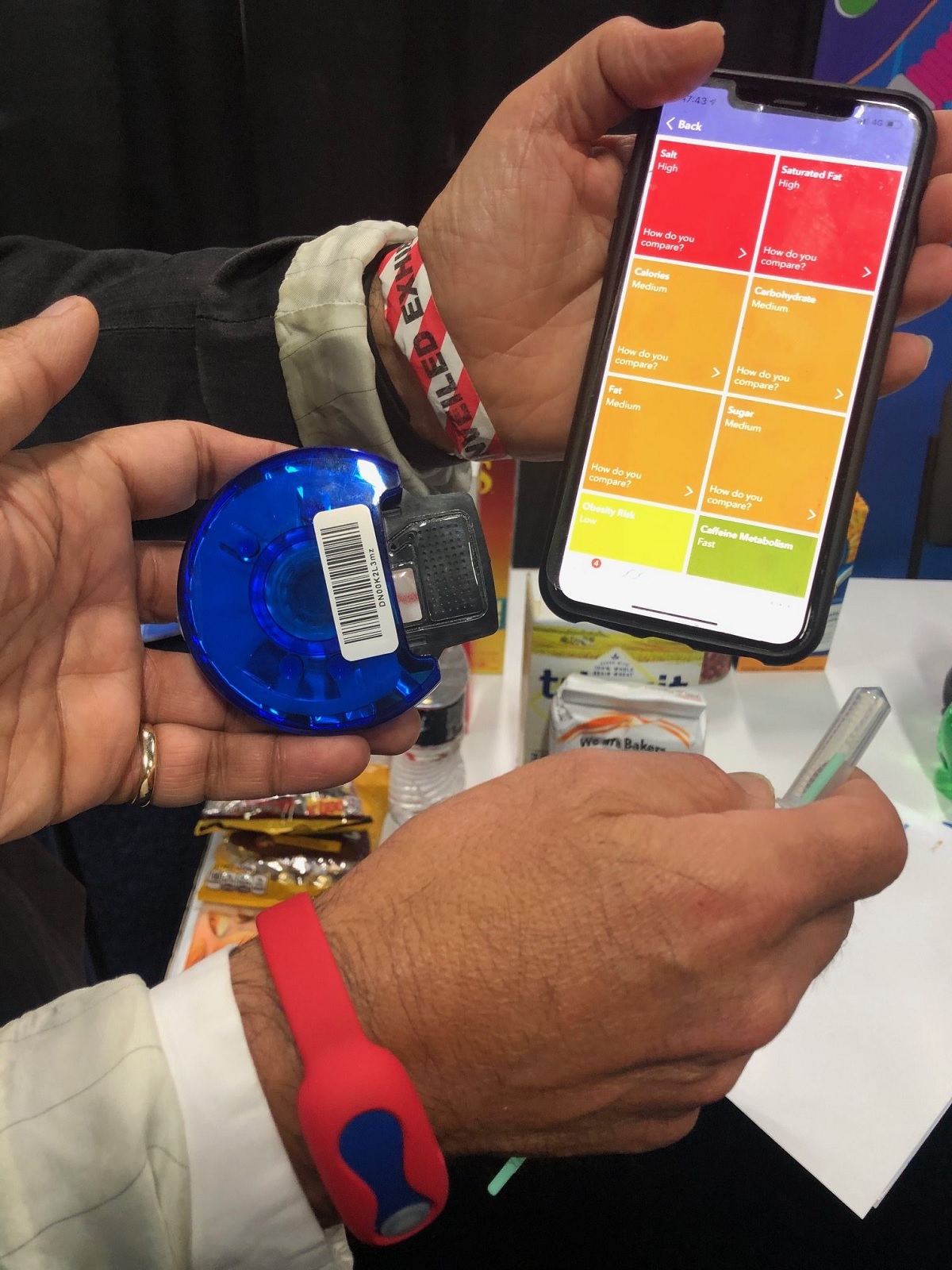
According to founder Christofer Toumazou, his latest startup, DnaNudge, is the marriage of semiconductors with genetics. It allows shoppers to scan food products as they browse, using a wrist-worn DnaBand. You can, he said, figure out which products are best for your unique genetic makeup.
The DnaBand also monitors physical inactivity, enabling the DnaNudge app to adapt its recommended product choices based on personal levels of inactivity. Using a portable lab on a chip (top left, blue device), it analyzes a cheek swab sample and maps your genetic profile to key nutrition-related health traits.
This DNA profile is then used by the band (red, lower left), which can be used to scan products in the supermarket to determine its impact on your diet and health. It’s being trialed by a leading supermarket in London, UK.
Valerann smart roads system
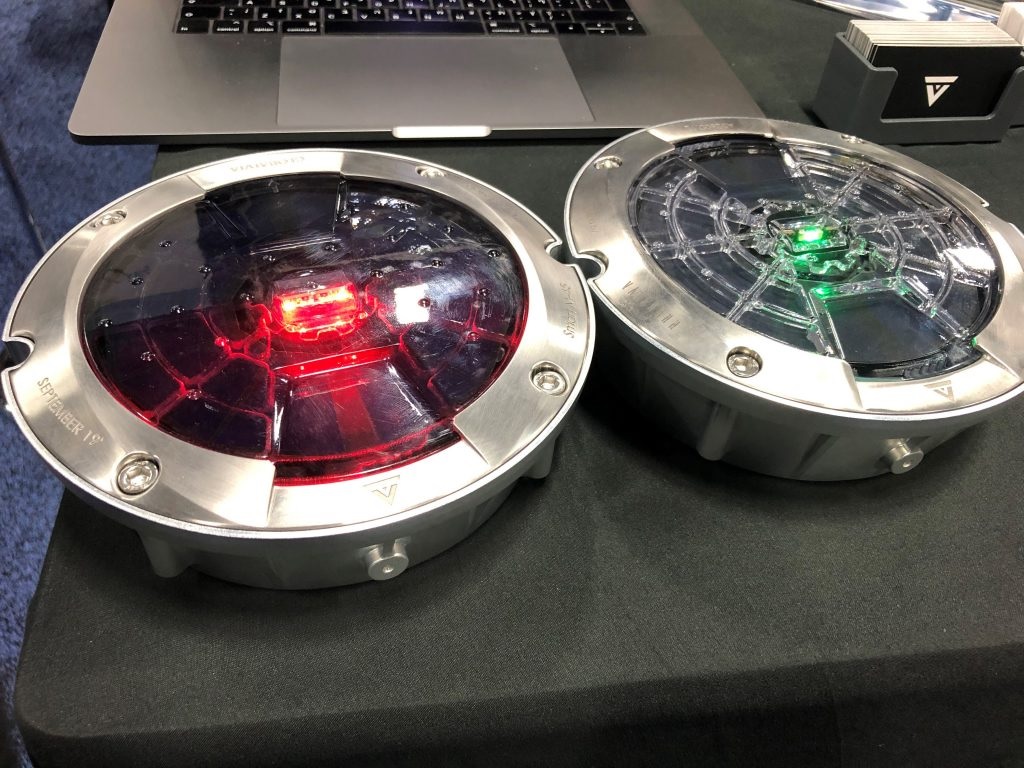
Valerann is an Israeli-British startup making its debut at CES with a smart roads system that places its Sense-X sensor modules directly into roadbeds along the lines that separate lanes.
The module includes motion detectors, magnetic sensors, and four other sensors to evaluate the road conditions and track every vehicle that passes. The system can provide information on roads, traffic, accidents and more. An open API allows government agencies that install the system to develop additional applications. The sensor units include LEDs that can communicate information to drivers (blue lights, for example, might be an indicator of icy roads; red might indicate a traffic hazard ahead, etc.).
Data goes to a set of roadside routers using a proprietary LoRa-based communications system. Valerann provides the sensor units free. It sells access to its cloud-based data service. The company claims that its approach costs less than 20 percent of other solutions.
Zen Health with Gardens and Orbs
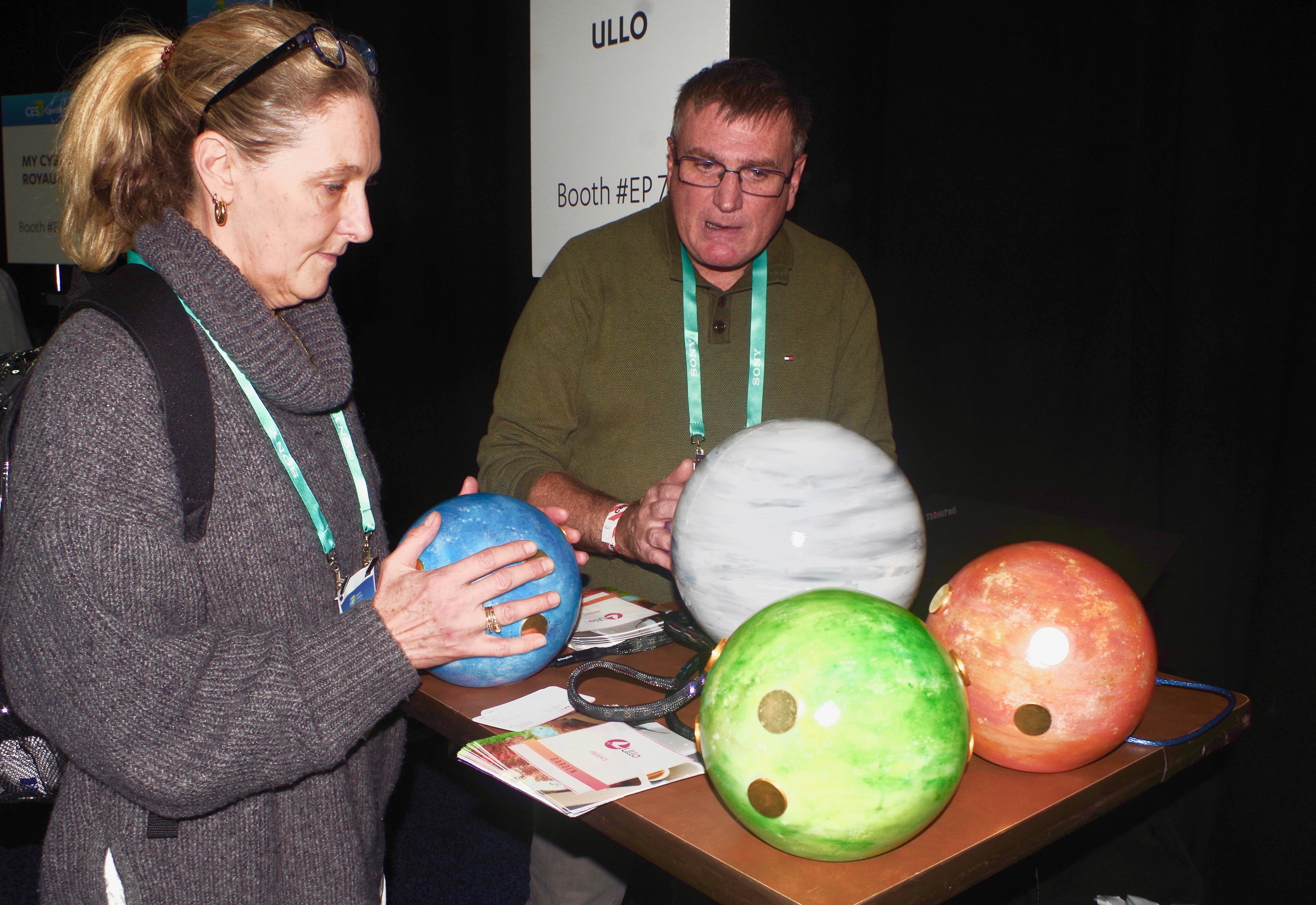
A digital therapy device maker based in La Rochelle, France, Ullo makes products that are hard to describe. Its primary product is called the Inner Garden, a sandbox — or “Zen garden” — filled with multicolored sand that can be shifted and sifted by the user. The device responds to these changes by changing the color of the sand, resulting in hills and valleys, lakes and plains, while appropriate sounds, birds, waves, etc., lend to a sense of calm and a “refocusing” of the user’s mind.
This “augmented reality” is aimed at providing drug-free therapy to, for example, young children with ASD or ADHD and adults with anxiety disorders or cognitive disorders, and elderly people with neuro-degenerative diseases.
The device also generates physiological data that, the company says, measure “biological rhythms” that are “invisible and largely forgotten,” but a source of information about the user’s internal state.
So, what’s with the colored balls? An homage to the erotic orbs in Woody Allen’s movie, Sleeper? No, as demonstrated here by Ullo’s international business developer, Alain Frey, to a passing conventioneer, the orbs use vibration and tactile stimulus that partly simulate the effect of Ullo’s Inner Garden.
Plugging EVs into the Grid
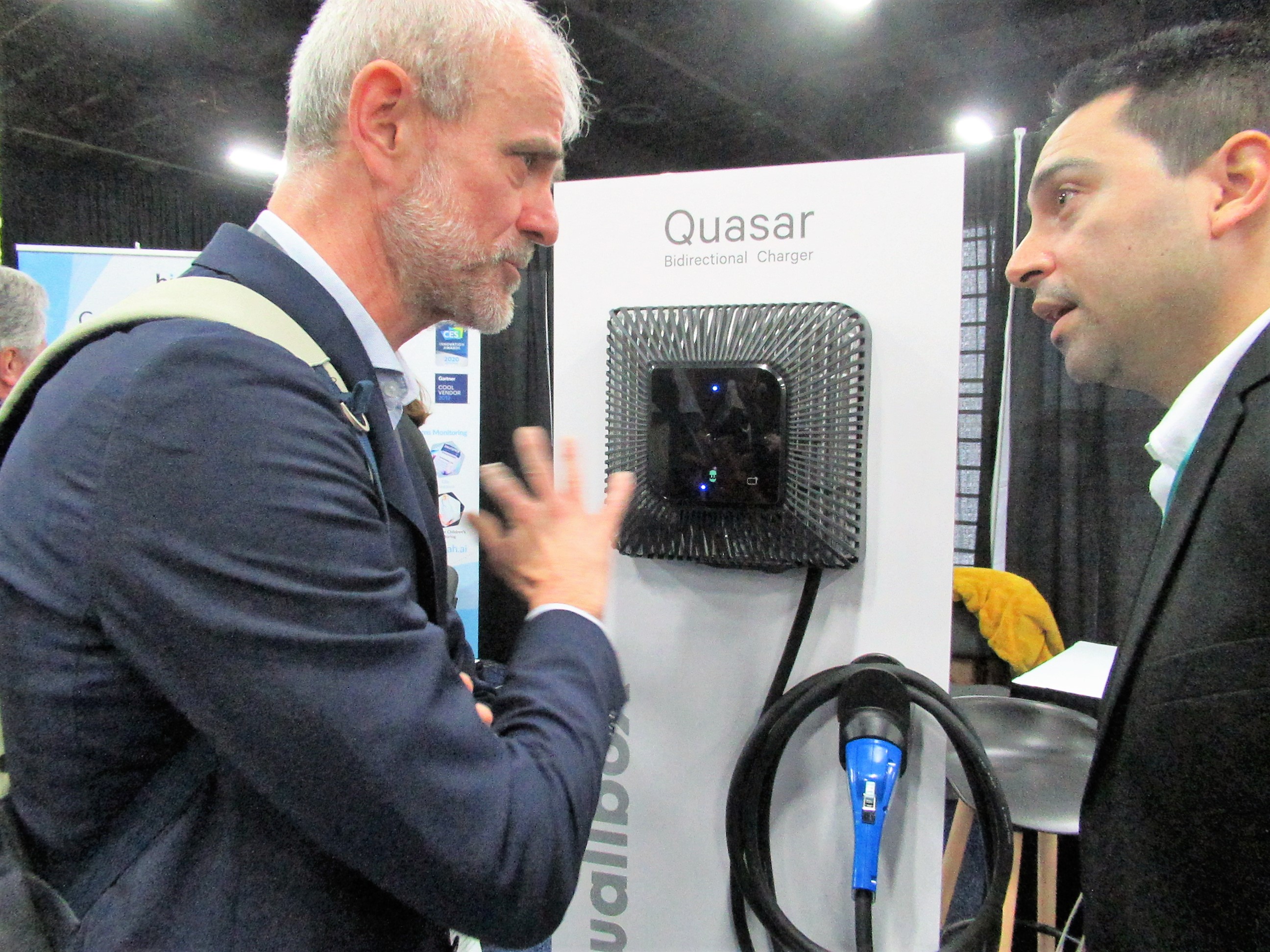
Wallbox (Barcelona, Spain), a manufacturer one of the best-selling DC EV chargers designed for home, has come to CES to unveil a DC charging system called Quasar.
The company calls Quasar ground-breaking because it allows bidirectional charging between the home, the grid and a specific EV.
Douglas Alfaro, general manager, North America at Wallbox Chargers, told EE Times, “As the mass adoption of EVs starts to happen, EV chargers originally developed with a home appliance mindset must change.” He touts Quasar as an intelligent “energy management system” — installed at home — dynamically decidng whether to feed energy from the family vehicle back to the home or directly into the grid. “We see EV as one important element of the electric grid itself.”
The Quasar DC charges and discharges through a CHAdeMO vehicle connector, enabling homeowners to take advantage of new vehicle to grid electricity tariffs, according to Wallbox.
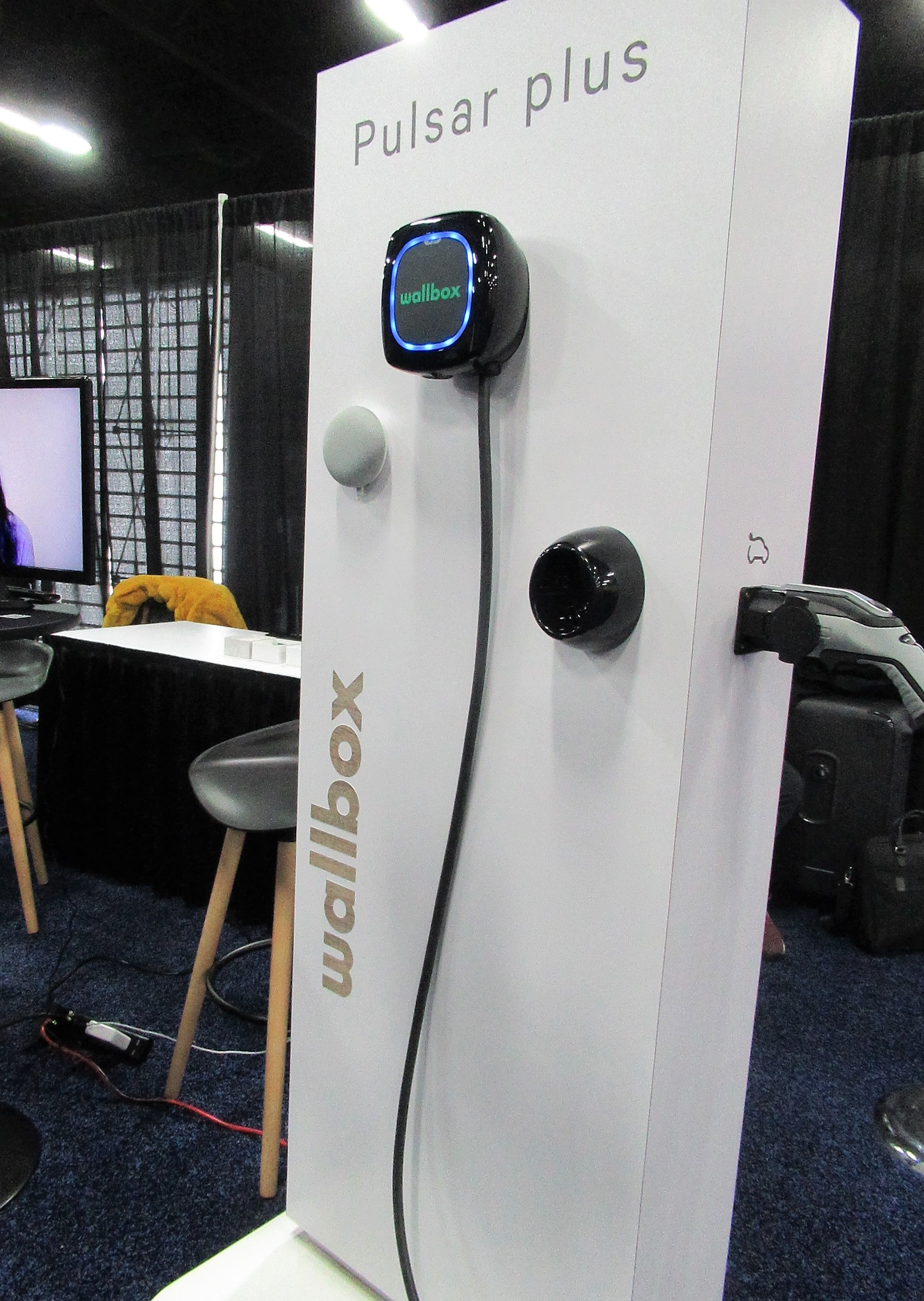
Wallbox is already selling Pulsar Plus, a compact and economical charger for every plug-in vehicle. Pulsar Plus features onboard Wi-Fi and bluetooth connectivity, enabling the charger to benefit from “added capabilities like maximizing energy use between the charger and your home and ‘power sharing’ between other Wallbox chargers,” according to the company.
The bidirectional Quasar will be available at around “$4,000,” said Alfaro. Pulsar Plus is priced at $649.
Why Is SiFive at CES?
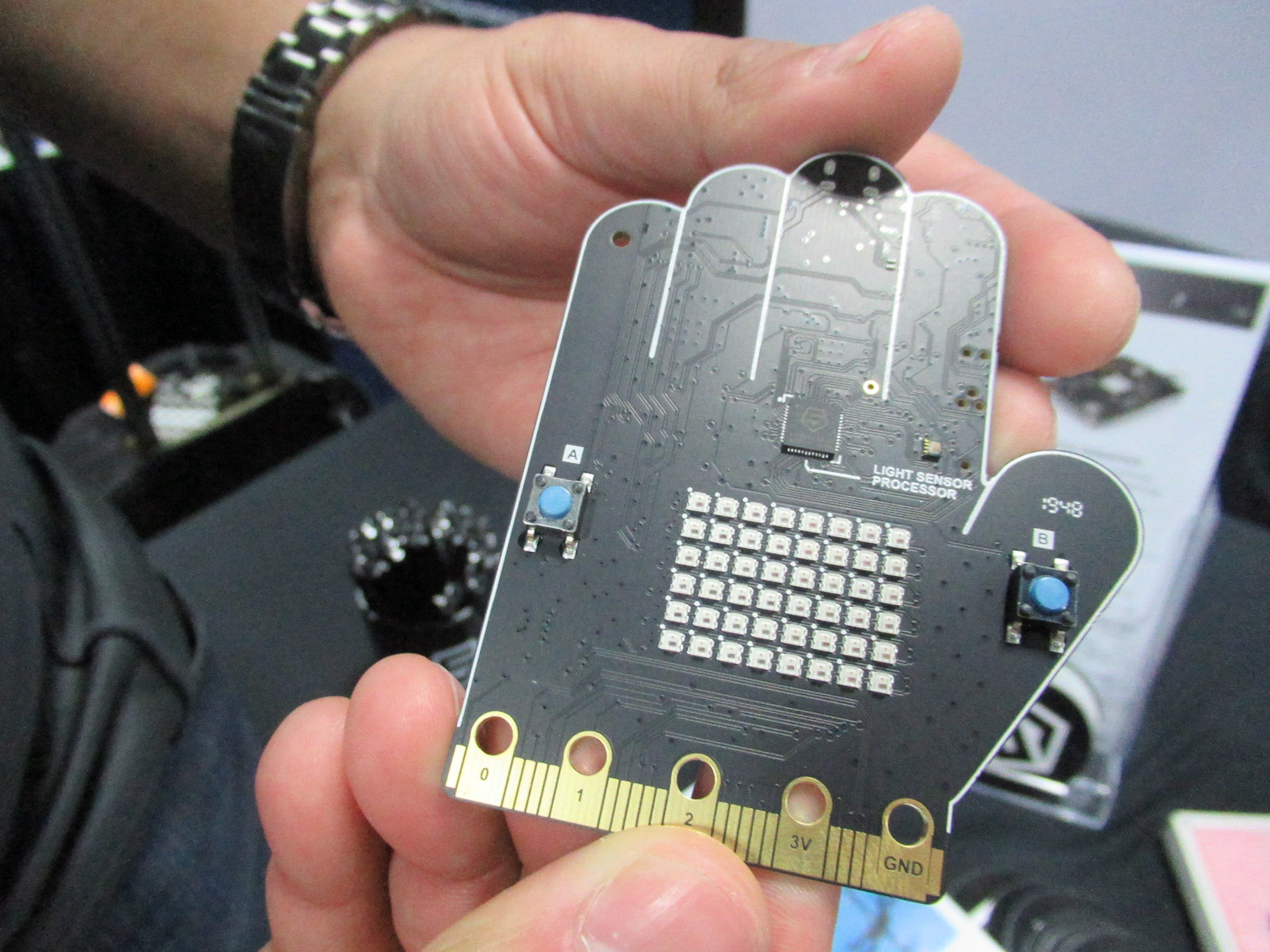
SiFive came to CES to show off its RISC-V-based IoT board, now qualified for Amazon Web Services (AWS).
SiFive’s new board is one of the first to gain status as an “Amazon FreeRTOS-qualified device,” claimed James Prior, senior director at SiFiVe. To earn this distinction, the Amazon FreeRTOS real-time operating system has been enabled with RISC-V support and paired with a freely available open-source support package, SiFive explained. SiFive sees this an important milestone to trigger broader adoption of RISC-V among devices directly connected to AWS.
The SiFive’s new IoT board, with built-in Wi-Fi and Bluetooth connectivity, offers a broad range of interfaces and sensors, such as accelerometer, thermometer, compass and ambient light detection. The company claims that “low-power operation is enabled through multiple power domains and a low-power standby mode.”
EE Times asked Prior: “But really, why are you guys here? Are you looking for ‘makers’ to use this board?” He said, “No. We are here primarily to talk to semiconductor companies.”
Prior noted, “Six out of the ten largest semiconductor companies have already signed up with us.” For example, Samsung disclosed in December that it is dabbling with SiFive’s RISC-V cores for next-generation AI, 5G (mmWave RF processing) and automotive applications.

Vital signs monitoring using face detection
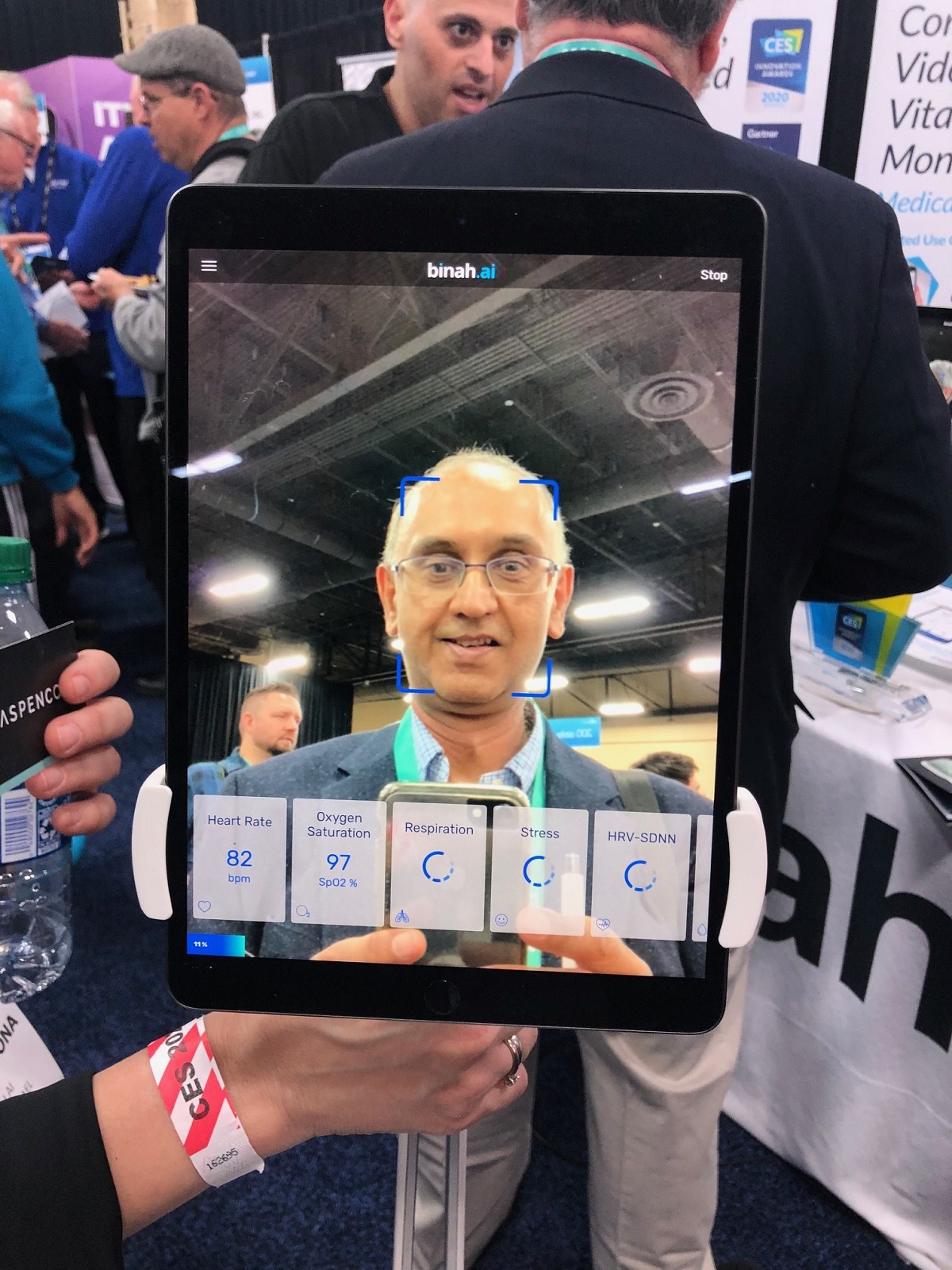
Digital health is a key trend to watch in 2020. There was no shortage of startups demonstrating health monitors and wearables at CES. This solution from Binah.ai is one of several wearable heart-rate measurement devices on show.
It claims to transform any camera-equipped device into a contactless video-based vital signs monitor. The camera picks up reflections in the cheek bone and uses medical grade data sets to monitor the heart using algorithms on the device itself, without needing connection to the internet or cloud.
Commuter smart safety helmet now has Alexa built in
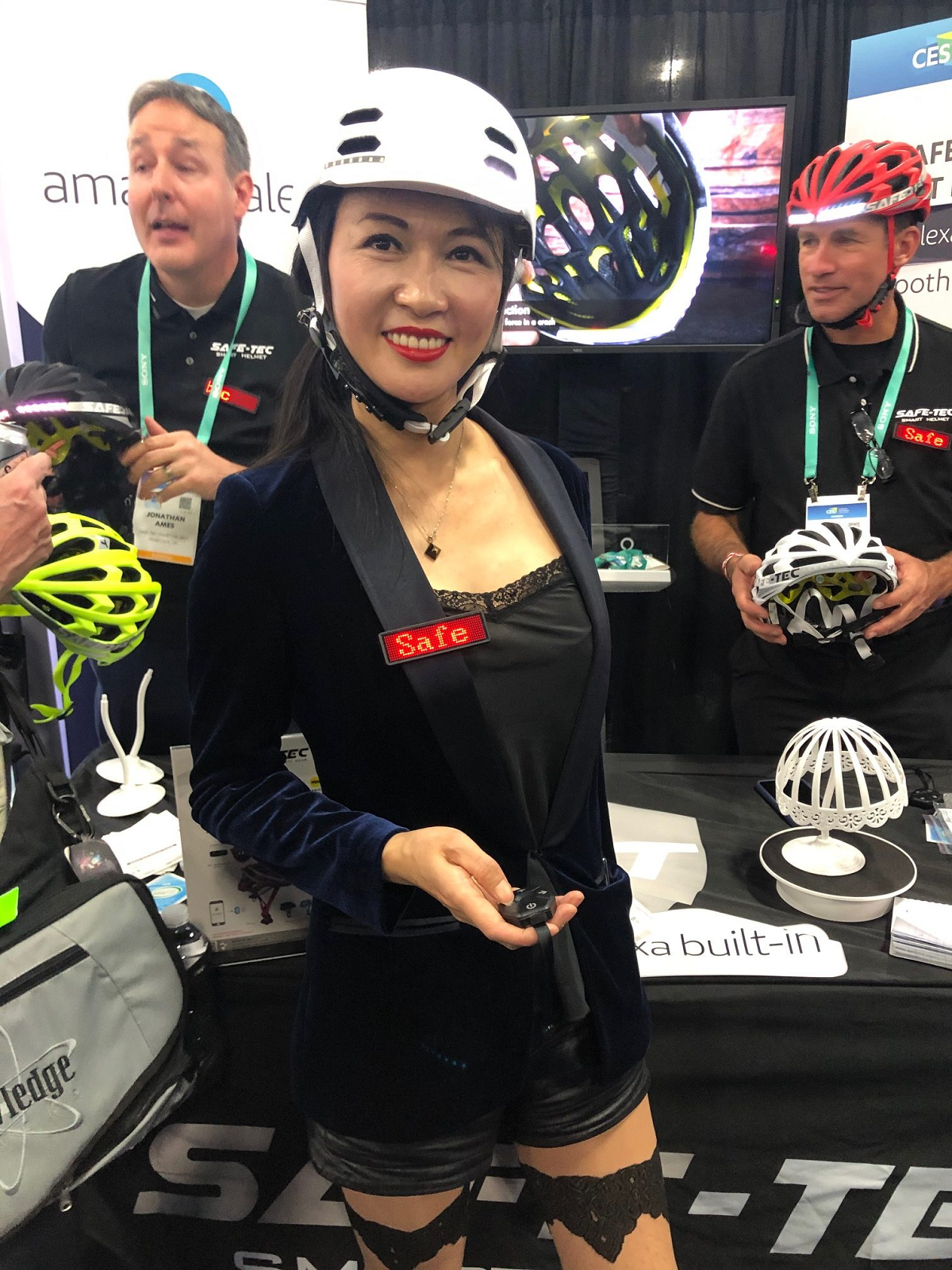
As we’ve been hearing for years, voice is the new human-machine interface (HMI). At CES, Safe-Tec, a safety products company, said it now has the world’s first Alexa built-in smart commuter helmets.
So while you ride to work, you can, for example, order Alexa to control the volume on your headset, listen to and send text messages, get GPS directions or find a point of interest, like a restaurant or a shop.
You might even control your smart home remotely, telling Alexa to turn on the heat, adjust the lights or manage other connected devices.
How well are you brushing your teeth?

As the Consumer Technology Association said in its opening presentation at CES, 2020 will be the year we see more connected intelligence in everyday items.
Oral-B showed the ultimate in application of pressure sensors, accelerometers, and AI to tell you how well (or not) you are cleaning your teeth. The Oral-B iO uses a frictionless magnetic drive to transfer power more efficiently to brush bristles.
A bimodal ‘smart’ pressure sensor provides feedback on pressure while a variable-speed smart drive adjusts the frequency to protect the gums. The app then uses positional data from the accelerometers to map how well you’ve brushed in each area of the mouth.
Vanity, Thy (Latest) Name is Opté-Skin
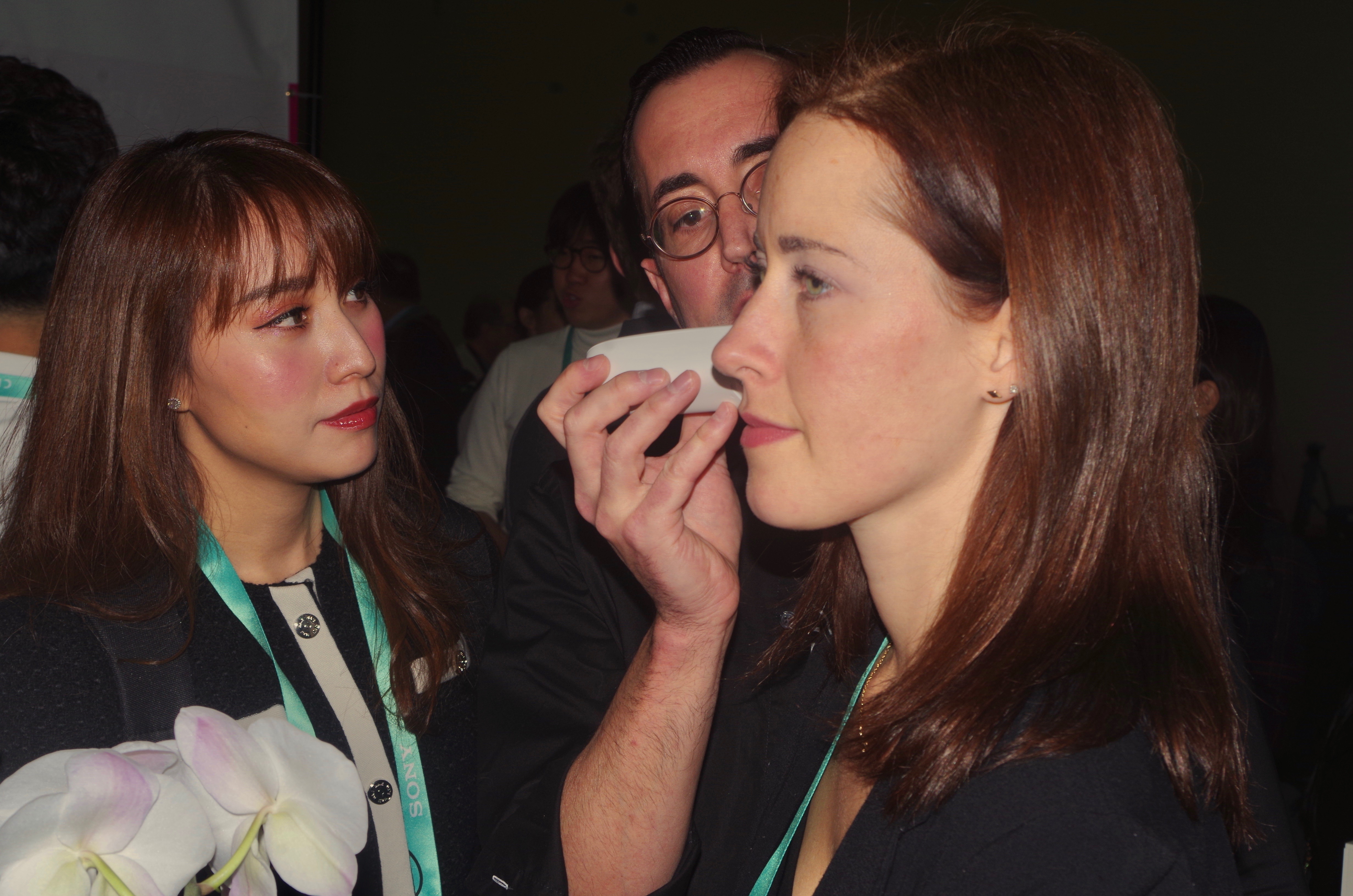
A fascinating cosmetic device, the Opté scans a user’s skin, capturing 200 digital images per second. The results is 60,000 pictures of the skin in each five-minute session, producing 70,000 lines of code “to determine the size, shape and intensity of the spot in contrast to adjacent surrounding skin.”
This all comes down to spotting spots and then, during the examination by the Opté device, applying a serum that reduces the blemish, sometimes making it vanish altogether.
Opté is a product of Opté-Skin a division of Procter & Gamble, based in Cincinnati. At about $600, including one serum cartridge (good for about two months), this is a fairly expensive solution to aging skin. By comparison, the same investment would buy 20 little jars of Oil of Olay’s Regenerist vanishing cream. On the other hand, it’s a lot less than Joanna Czech’s “Cream Extraordinary,” which retails for $1,170.
The Opté’s effects aren’t lasting, but neither is Oil of Olay or Cream Extraordinary. What’s cool is to watch as the Opté device cruises over spots and blemishes and makes them either shrink, fade or go away entirely.
Remotely Charged from Milwaukee
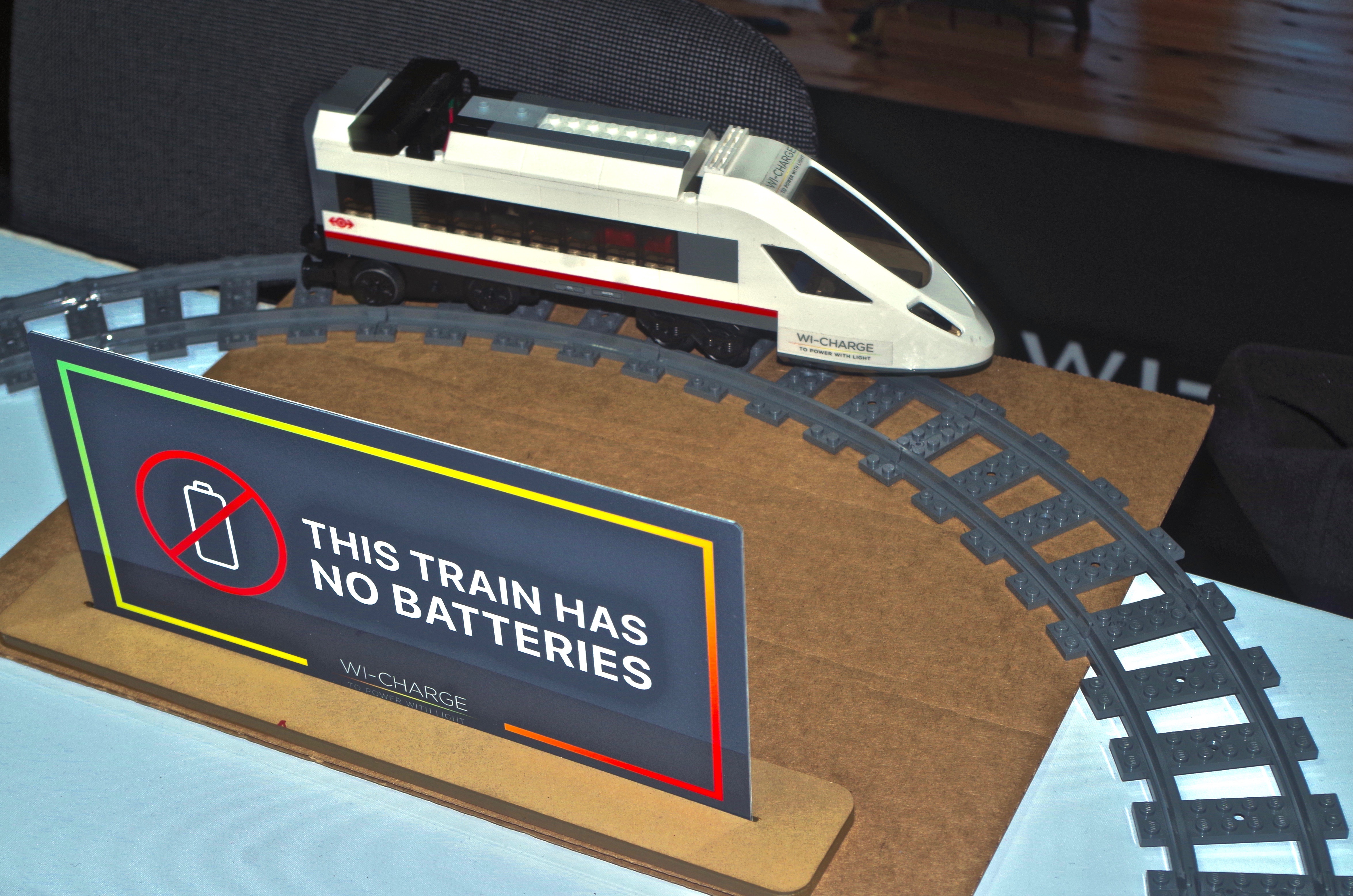
Wi-Charge, based in Miwaukee, has created a wireless device, plugged into a home’s electric system that projects infra-red light to battery-operated appliances, like doorbell cameras, smoke detectors, flush valve and even mobile phones, and recharges them. Wi-Charge, in essence, makes it unnecessary to plug these devices into a charging station or, worse, climb onto a ladder and put in new batteries.
Chief marketing officer Yuval Boger explained that the Wi-Charge transmitter sends harmless infrared beams to receivers. Receivers (typically embedded in the devices to be powered), convert the light to electricity. Receivers use small photovoltaic cells. This concept is similar to solar panels converting sunlight into electricity.
Wi-Charge’s Boger was demonstrating this technology by running a toy train in an endless loop around its track. As long as power went to the infra-red transmitter — which could be located as far away as 30 feet, the only thing that could stop the train was a derailment.
Reachy the Legless Robot
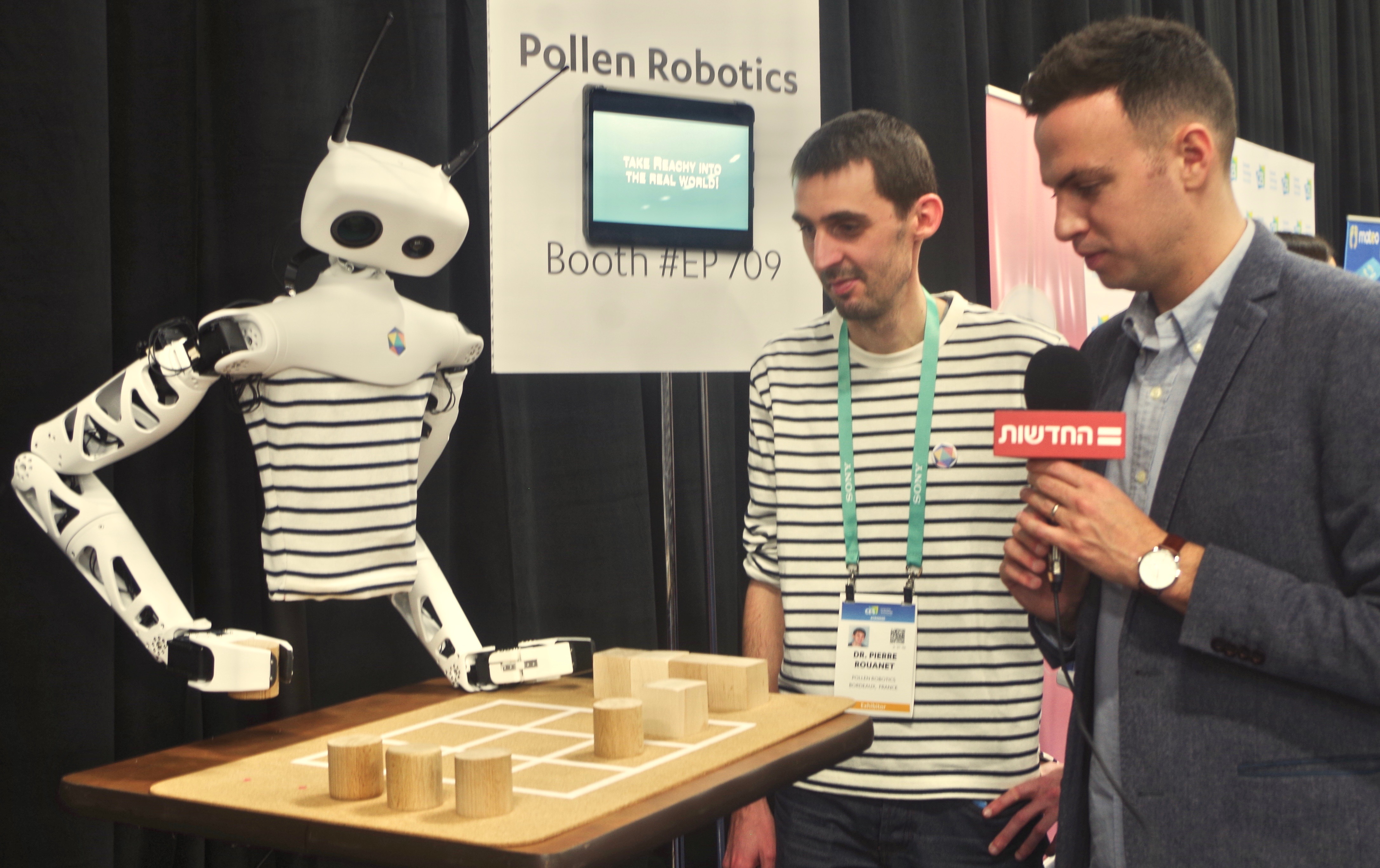
Pollen Robotics has devised a sort of erector-set robot, called Reachy, which it says is useful for developers because all of its parts are available as modules that can be assembled according to the projected functions that Reachy will perform.
Pollen Robotics’ Dr. Pierre Rouanet, shown in this photo demonstrating Reachy’s nimble humanoid arm to video reporter Omri Barak, explained that the arm has “seven degrees of freedom” and enough muscle to lift objects up to half a kilogram (a little more than a pound). Reachy’s head is touted as very expressive and animated. Pollen Robotics has made Reachy available via an open-source platform. The legless android can be programmed in Python and offers ready-to-use operational environments — serving coffee, playing musical instruments, handing out specific objects, etc.
Pollen also notes that Reachy is also fully customizable with open hardware, software and data. He comes in three levels of human verisimilitude, “basic” (without a head), “expressive” (with only one arm), and (shown in the photo) “advanced”.
Wearables for dogs: find out your dog’s feelings
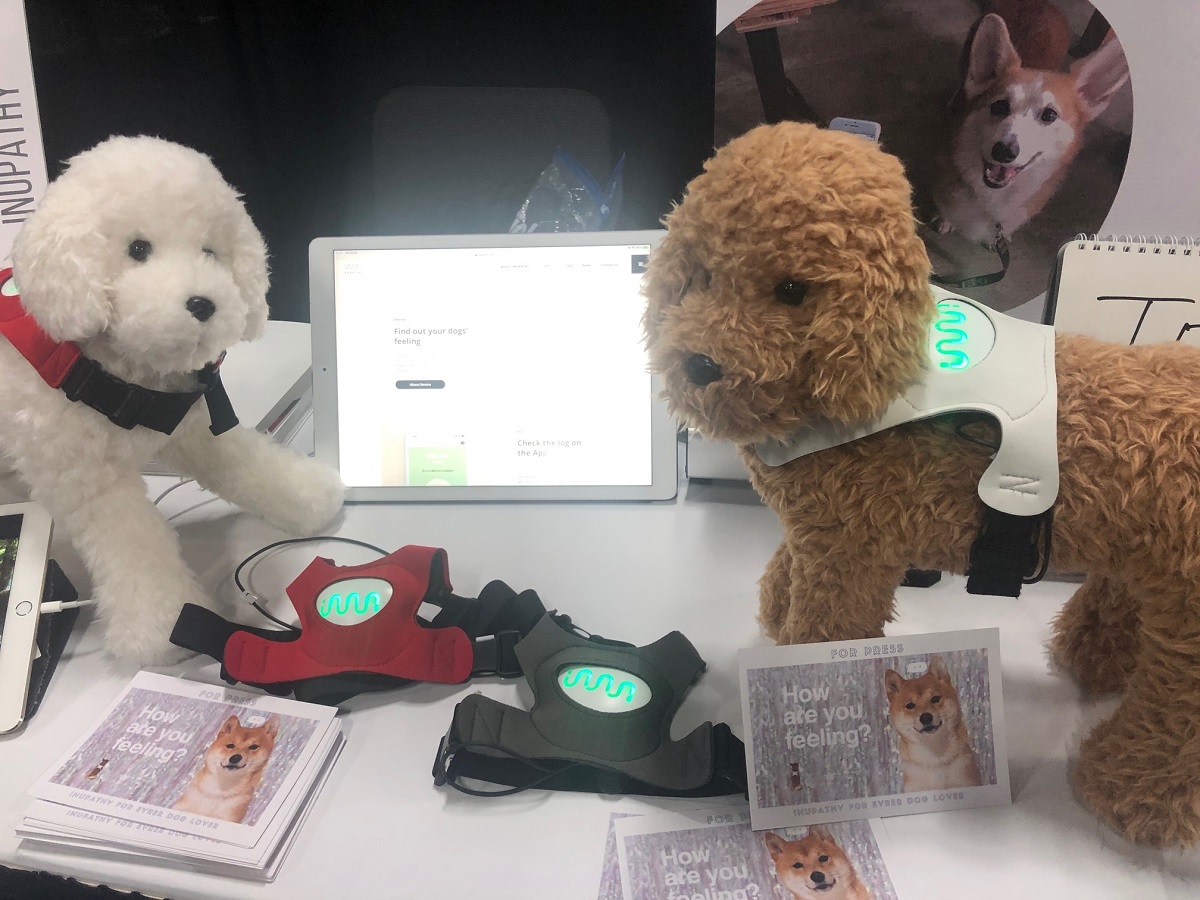
This wearable from Japanese startup Inupathy claims to be the first in the world to visualize your dog’s emotional status using heart-rate information.
Different colors tell whether the dog is in one of five states: “relaxed”, “excited”, “happy”, “interested” and “stressed”. It measures heart-rate variations using sensors that sit on top of the fur, eliminating the need to shave a contact point.
It is based on a microphone system that incorporates a noise canceling technology, removing other acoustic sounds and focusing on heartbeat. A waveform is processed through an electronic circuit rather than software, which is then interpreted to measure the dog’s mental status, which shows up on the colored lights on the belt.
Non-invasive sensors to monitor aging parents
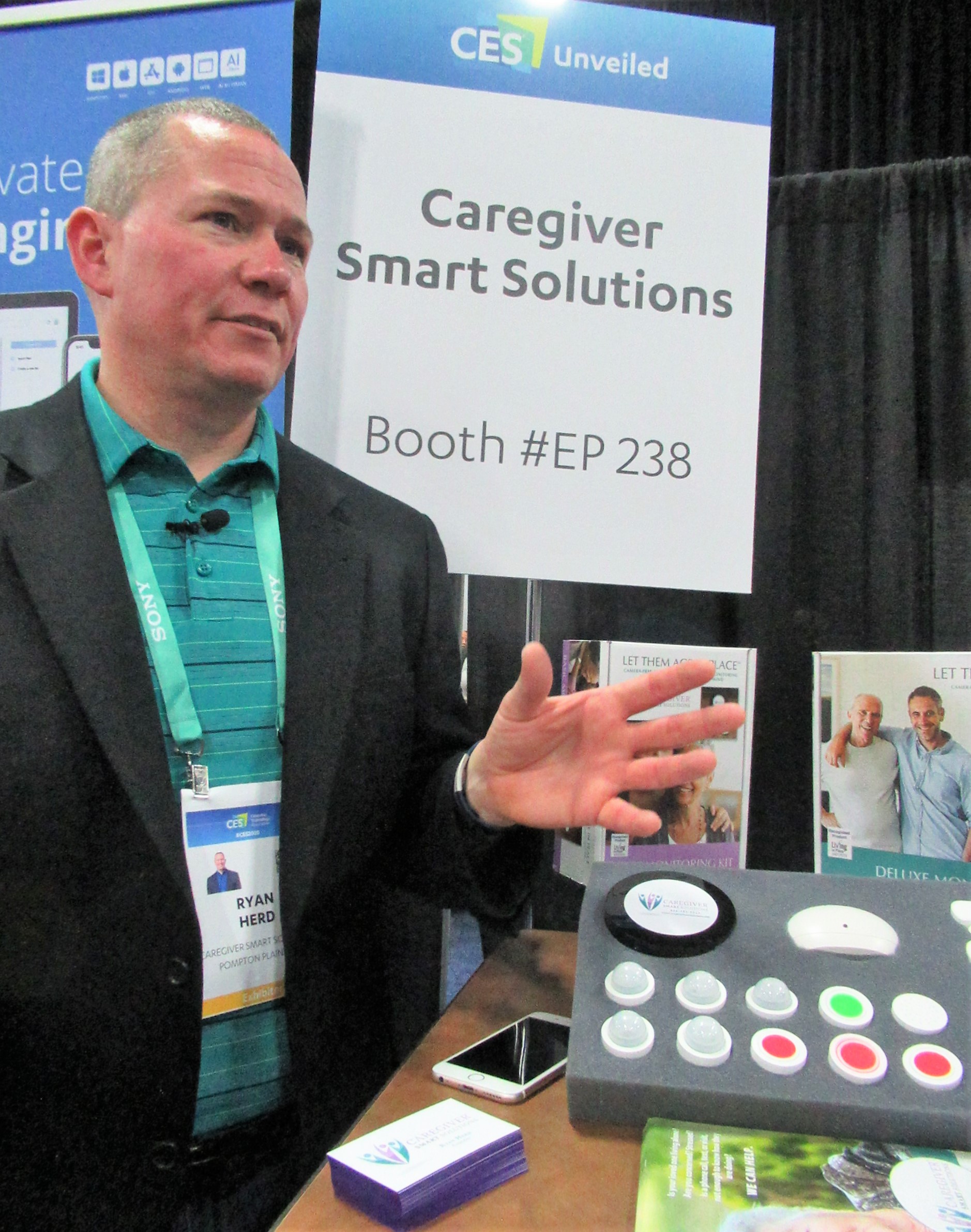
Doesn’t the world already have enough systems to watch out for our aging parents. “Sure,” said Ryan Herd, founder of Caregiver Smart Solutions. “But we wanted to develop solutions that are not camera-based, and that don’t require the elderly to wear something.”
The company’s monitoring system kits – available in levels – include sensors for movement, humidity and temperature, front and side-door motion, medicine cabinets, coffee pots, refrigerators, TV and fall detection.
The idea is to offer caregivers a system to track and monitor “change of habits” of the elderly. By sending tracked data to the cloud, the system learns the subject’s habits within weeks. The system checks the data against the information from the Centers for Disease Control and Prevention, offering analysis any changes in routine that might indicate problems like a urinary infection or the onset of dementia.
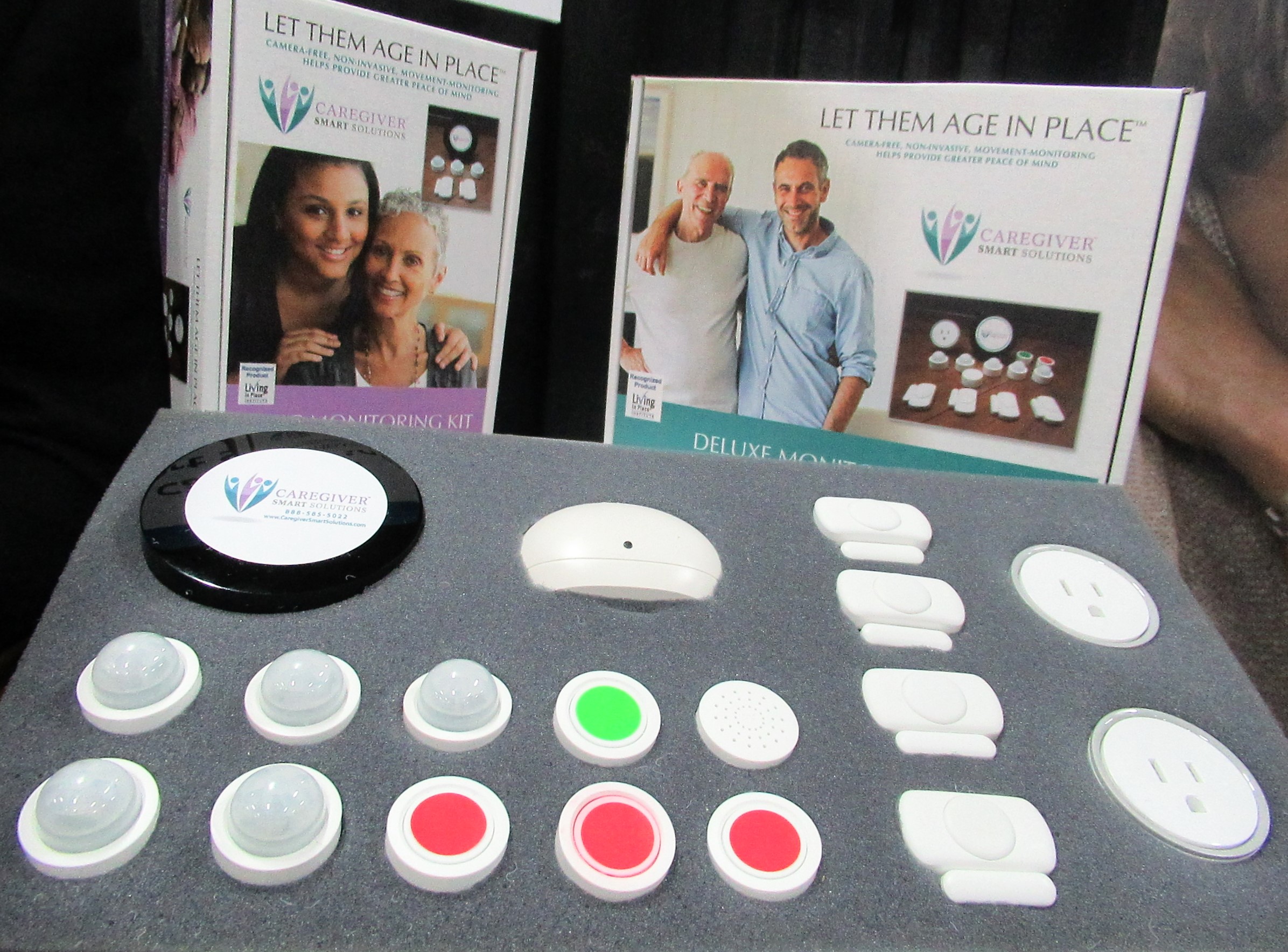
Thin Enough and Fast Enough for the City

Wello, a startup based on the island of La Reunion in the Indian Ocean, but soon to open a manufacturing plant in LeMans, France, has devised a solar-aided electric vehicle thin enough and fast enough (40 kilometers an hour) to carry a passenger or two, as well as light cargo, in an urban setting with little environmental impact.
With an effective range of 40-60 kilometers, increased to about 100 km with a roof-mounted solar panel, it can make a day’s worth of trips or deliveries in an around a city, sharing the streets with cars and buses.
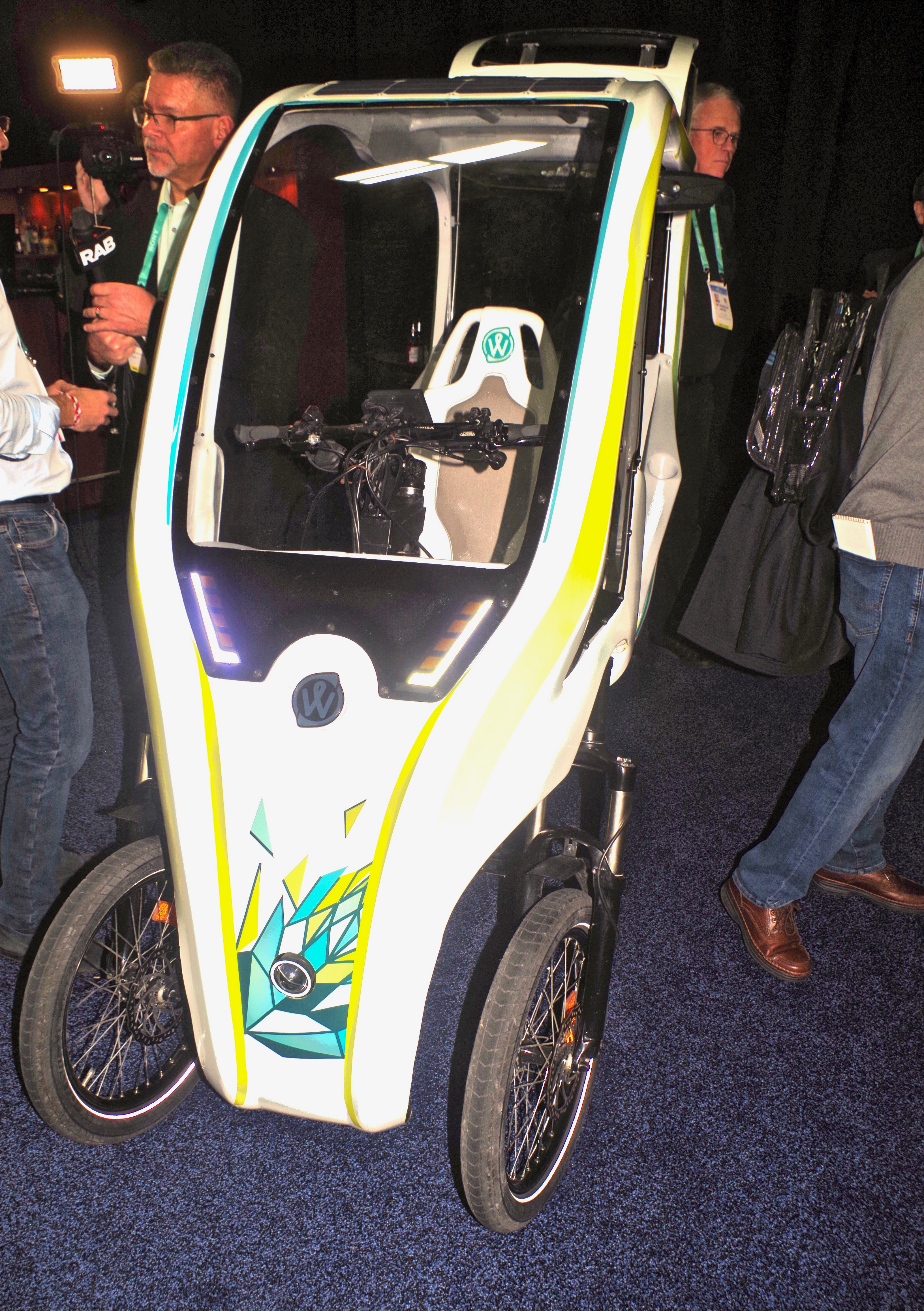
Pokit goes Pro
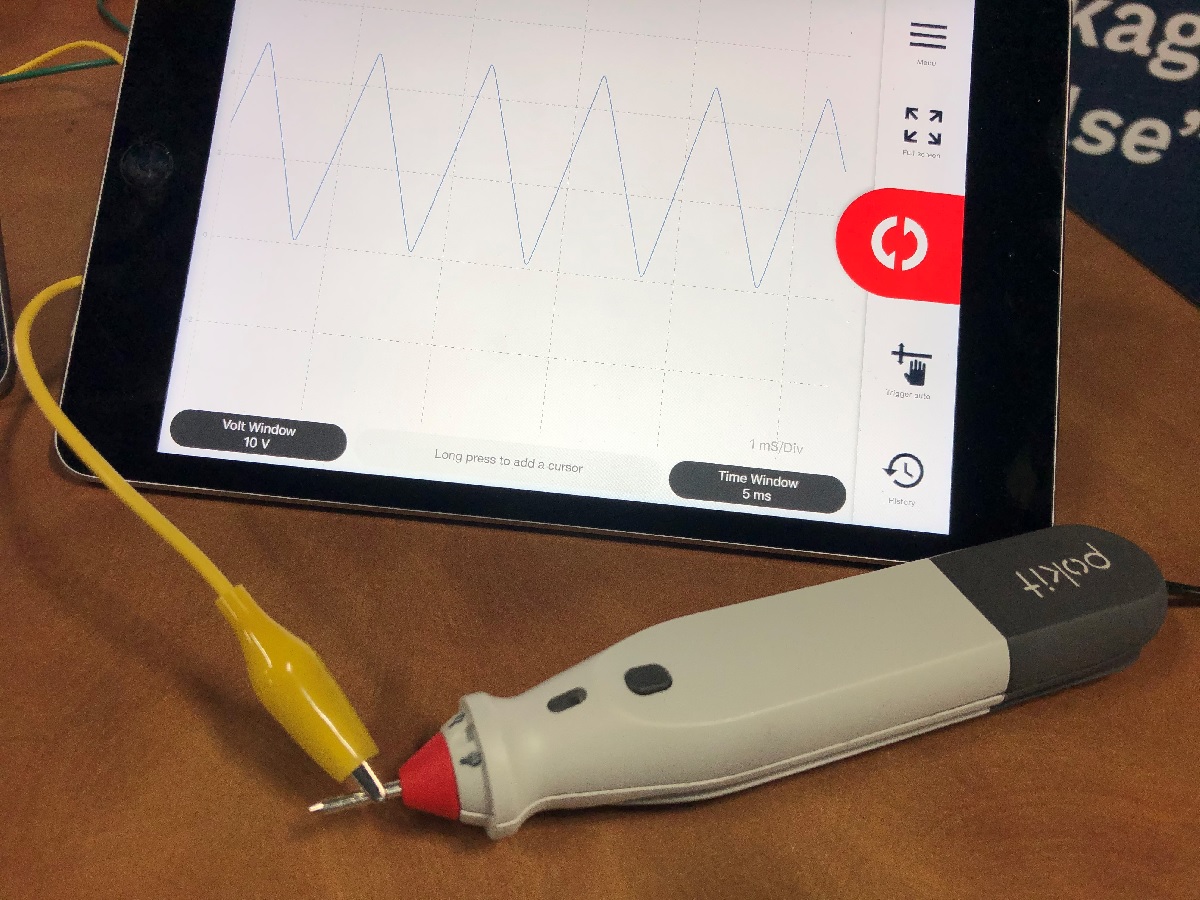
Last year, Pokit Innovations introduced the world’s smallest combination digital multimeter/oscilloscope/logger. The original Pokit is about the size and shape of a large luxury wristwatch and sold for $89. This year at CES Unveiled, the company demonstrated the larger Pokit Pro, which handles much higher voltage and adds spectrum analysis capabilities, all for $129.
Pokit devices are wireless, communicating with a phone or tablet using Bluetooth. CEO Paul Moutzouris told EE Times that a Pokit customer “more exacting than we are” did side-by-side comparisons with a much larger and more expensive similar device from a very well-established T&M company and reported the Pokit was more accurate.
Smile, you’re on Unveiled Camera

Every year, the population of videographers expands at CES. And they all come out for “Unveiled,” giving booth hosts the rare thrill of being interviewed, complete with camera, fuzzy microphone and an “anchorperson” variously able to ask coherent questions. Or not. We caught IoThink’s Manon Gatellier graciously participating in one of these willing ambushes, but the interviewer escaped before we could get his name and network.
IoThink has developed Kheiron SP, an Internet of Things SaaS platform that “enables… use cases for various markets such as Smart City, Smart Building, Smart Industry, Smart Energy,” etc.
Cool, huh?
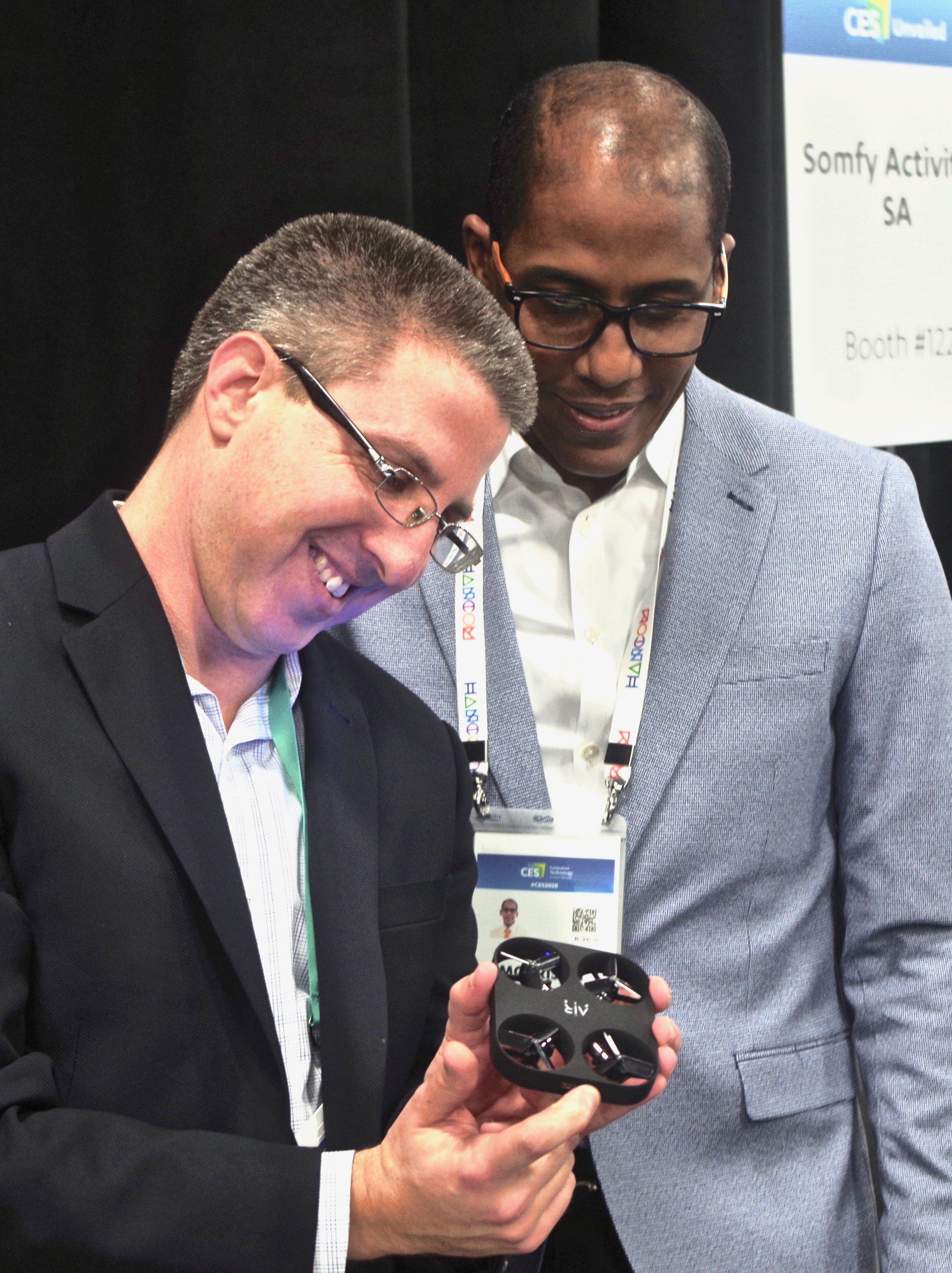
We did not dig deep into the technology of the AirSelfie, which is pretty obvious. It debuted last year at CES Unveiled, but drew fascinated crowds again this year. It was fun watching the tiny drone hover five feet above the carpet, taking pictures of the media mob who were trying to take pictures of it.
Here, Matthew Hirsch of AirSelfie shows off a grounded AirSelfie, which is barely bigger than a beer coaster.
Subscribe to Newsletter
Test Qr code text s ss


